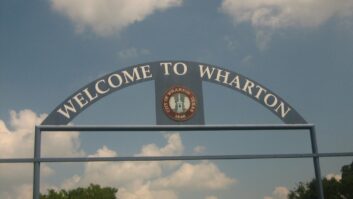Several parts of the FCC’s commercial radio and television license renewal Form 303-S have changed, as we’ve reported; and licensees in the first renewal group — Maryland, Virginia, West Virginia and the District of Columbia — are working to get applications in on time. The first renewal window opens May 2 and closes June 1.
NAB held a webinar for members on this topic Tuesday; ad discrimination certification was one of the topics, as reported here. Other aspects of Form 303-S that have changed concern the minimum operating schedule and RF exposure limits.
The licensee now must certify that the station has not been off the air or operating for less than its prescribed minimum operating hours for 30 days or more during the last license term, or if it had been, explain why. Audio Division Chief Peter Doyle said that in tough economic times, the commission has seen a “surge” of stations go off the air. The commission is looking to confirm operating dates in this section of the form, he said.
“I don’t think it’s a problem if you’re off the air for a long time due to a technical problem” and you’ve alerted the commission, he said. However, if a station has only been operating for, say, eight days out of an eight-year license term, the commission might want to look at that to see if an unconditional license renewal is warranted.
Previously, AM and FM licensees had to submit an exhibit or worksheet to demonstrate compliance with maximum permissible RF exposure limits. Now the exhibit/worksheet is replaced by a certification stating that the station’s RF environment has had “no material change” since the last license renewal or initial application. But an exhibit or worksheet is still required for stations that have had a material change.
Doyle said “many” stations and some in-house engineers had told the agency it “could have a lighter touch” with RF certification. “And we concluded we could.”
Where a station is in compliance and there’s been no material change in the RF environment, it can rely on other Media Bureau-related grants at the site to infer that cumulative RF radiation is within OET guidelines. In a note to clients, consultant Laura Mizrahi of Communications Technologies stated that this interpretation “may not take into account the contributory effect of any cellular, microwave or wireless antennas that may also be present” and not subject to Media Bureau regulation. By checking “yes” on the RF certification box on the form, a station is implying there’s been no material change in the site and that its RF radiation levels are still in compliance. Mizrahi recommended that stations check with their FCC engineering consultant or attorneys to be sure.
Doyle said: “For example, if there’s now a large apartment building next to the site, or if someone takes down fending around an AM array, we’re interested” in hearing about that kind of change.
— Leslie Stimson










